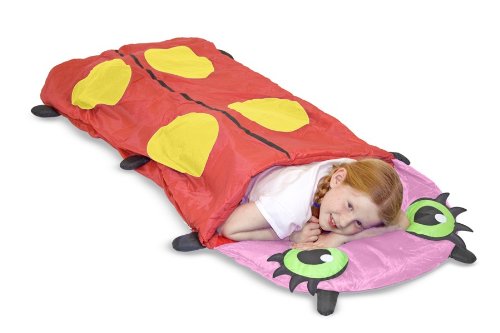As I have mentioned, It starts early. Of course children can think (in the most basic sense) before they are even walking. However, the notion of teaching kids to think in an educational sense is something quite different. Parent(s), guardian(s), or preschool teachers should be able to give children a head start in learning by teaching kids to think at an early age.
Here are some suggestions for teaching kids to think for teachers as well as moms, dads and other guardians.
Melissa Doug
It starts early. Children can use their minds long before they are walking. However, the notion of teaching kids to think educationally quite different. We should be able to give our children a head start in their learning skills by teaching them as early as possible.
Here are some suggestions for teaching kids to think for teachers as well as moms, dads and other guardians.
· Interest them:
Believe me when I say that boring does not work. A bored child will definitely be thinking, but he or she will be thinking about what is outside the window or playing basketball after school--but, obviously, that is not the type of thinking under discussion in this article.
In fact, teaching children to think in an educational sense is based on drive, motivation and curiosity. Once kids are high school ages, they are sometimes ambitious and motivated by the idea of promoting their future success, they may not be interested in the particular subject matter at hand, but an interest in gaining the knowledge he or she will need when the time comes for college, finding good jobs etc.
Nonetheless, they are interested--and therefore listening, and really thinking by him or her self. That being the goal is teaching them about thinking in order to establish their cognitive development. Once the children have figured out how very important their education is to their future--the prospect of making the lesson interesting is not as important as when teaching children who are in lower levels of education like preschool, kindergarten, and virtually all of the elementary grades. Older, motivated children are interested because knowing the material is essential for them.
The others--older kids--if not interested in thinking and developing their knowledge, are students we wish we could guide and instruct well enough to change their minds. But there will be students that are never interested in learning or study. Unfortunately, it is his or her choice.
· Younger children sometimes need to be involved more so than just sitting at their desks and answering questions.
o For example:
Story time:
When you tell a story, do not just read the words on the page. Pause and ask the kids questions like:
"Why do you think that the two children are dropping crumbs behind them as they go deep into the woods?"
Another idea is to follow the words on the page with your finger. Sometimes kids learn the first steps toward reading this way. Especially when you use repetition as a part of your plan--the kids will begin to know the words by heart. Therefore the children begin to recognize words.
Before continuing the story, let the children guess why and make sure (whether they figure it out or not) that by the time you turn the page that they know the children were leaving bread crumbs behind them as a trail to find their way back home.
--There are many questions you can ask in between, as you know, that will help the kids wonder a little more--
Then when the boy and the girl in the story try to go back ask them, "where are the bread crumbs to guide them home?" "Maybe they are going the wrong way and they center of attention not find the bread crumbs," etc. Let the children try to answer, and then when you have determined that the crumbs had been eaten by birds, give an example of birds eating crumbs. Ask something like: "Have any of you ever fed bread crumbs (or even birdseed) to birds before?" and "What other times did you feed bread crumbs to animals?" (for instance: the ducks in a pond at the park.)
Special Price!!! Melissa & Doug Sunny Patch Mollie Sleeping Bag
Nov 09, 2011 00:59:01
Click for larger image and other views

Melissa & Doug Sunny Patch Mollie Sleeping Bag Feature
- Sleeping bag is over five feet long
- Featuring Sunny Patch characters
- Stuffed with comfy polyester
- Perfect place for a night filled with sweet dreams
- Exceptional Quality and value
Melissa & Doug Sunny Patch Mollie Sleeping Bag Overview
Melissa & Doug Toys - Mollie Sleeping Bag. The only buzzing from this sleeping bag will come from your sleeping child! Snug as a bug takes on a whole new meaning when your child is curled up in this cozy ladybug sleeping bag. Over five feet long, this bag is stuffed with comfy polyester and is the perfect place for a night filled with sweet dreams! Dimensions: 11.25" L x 9.5" W x 9.5" H Weight: 2.4 lbs.SAVE NOW on the special offers below!
Available In Stock. |
| This Melissa & Doug Sunny Patch Mollie Sleeping Bag ships for FREE with Super Saver Shipping. |
Price : Click to Check Update Prices Please. |
